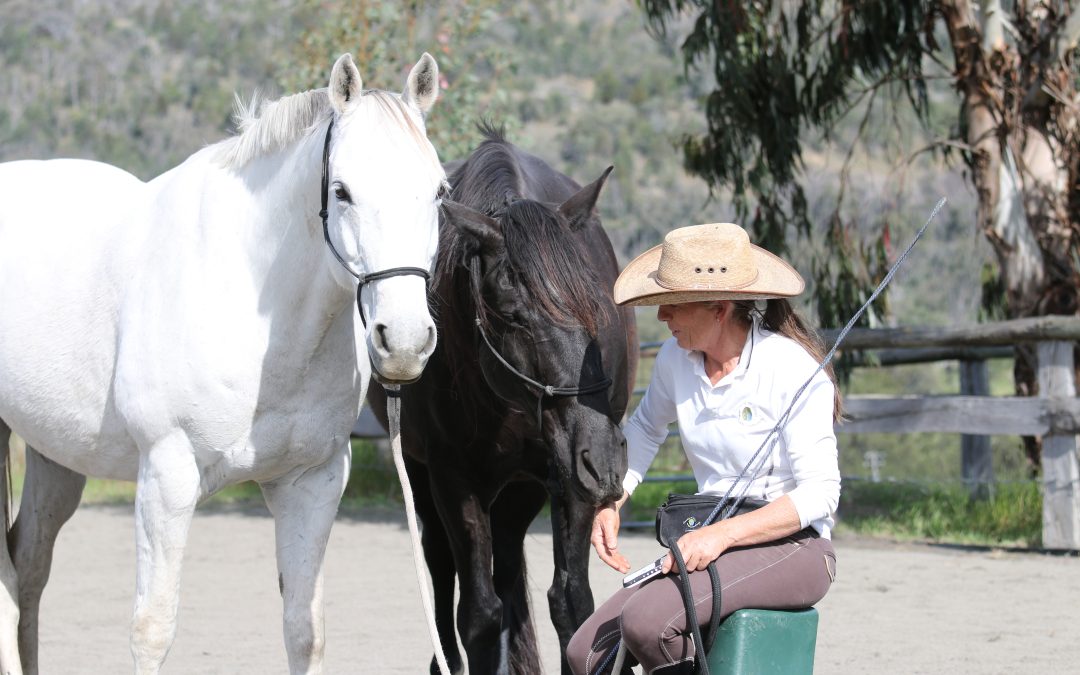Course Venue
“Banyandah” Howlong, NSW/VIC border
5527 Riverina Hwy Howlong
Banyandah is a purpose built horsemanship centre on the Murray River with many great horse training areas, and obstacles to play with. It also offers superb accommodation or options to camp. For more details about this contact Jane Reid horseheaven@albury.net.au 0428 537 977
Start & Finish Times 9:00-5:00 ( or til we are finished – we sometimes run over time)
COURSE 1 – MARCH 22-24
THE FOUNDATION – CONNECTING AND FUNDAMENTAL FEEL IN GROUND SKILLS
This course lays the foundation for beautiful partnerships with horses – mind, heart and soul connections with horses. Learn how to connect, communicate and understand your horses – why do they do what they do? Learn the ever elusive quality of feel. This course is also Part One of the Postural Development and Biomechanics Groundwork therapy course and the pre-cursor for the Riding with Synchronicity courses, Liberating with Liberty, Engagement and Collection, Cascading Confidence and Positive Reinforcement and Marker Training Courses.
Learn the philosophy and foundational techniques of “Connecting with Horses and Riding with Synchronicity” – the art of creating beautiful partnerships with horses. Inspiring and supporting horses and people to become confident and empowered, to be together in harmony, and move with freedom, balance and athleticism. With softness, gentleness, kindness and love, you can have leadership and develop a magical bond with your horse, a true friendship. Connect to your horse’s mind, heart, body and soul.
How good would it be:-
To feel safe and to feel that you and your horse could communicate clearly and understand each other?
To have a horse that is a willing partner and wants to participate?
To have a calm horse who at the same time is magnificent, expressive, energetic, graceful and a physically strong, powerful athlete who could safely carry you down the trail or be a performance horse ?
This is my dream horse. And a horse like this is created not bought. Even if you bought one that seemed to fit the bill, unless you learn the skills, that horse won’t maintain those qualities. They can’t. They will fall to the level of skill and be affected by the mindset and the energy of the person they are with. We have to develop ourselves. This teaching addresses all areas of mind, body and spirit to help horses and people reach their highest and most magnificent potential and achieve your goals.
This is FEEL GOOD HORSEMANSHIP – because it causes horses and humans to FEEL GOOD !!!
Learn more about the course content...
This course will begin to teach you how to understand horse’s minds, emotions and their physical bodies. It also goes deeper into the spiritual nature of horses and the deep connection between horses and humans. This course teaches the core principles of centering, breathing, body scanning, energy awareness and body language which are all essential keys to success with horses. Begin the journey to becoming a “true” horseman. “True” meaning with the qualities that the horses themselves would choose to have in a horseman.
Whilst we work with the mental, emotional and spiritual aspects this course is at the same time is very practical. Teaching a quality of FEEL in working with horses that most people never learn in a lifetime. FEEL is the HOLY GRAIL of horsemanship, it is the fundamental essence of all great horsemanship. Some believe that it can never be taught, that it is just a god given talent that some people have and others don’t, but I have found a way to teach this intrinsic and elusive quality and make it available and attainable for everyone that has the commitment and dedication to learn.
Here is what you can learn at this course:-
Connect with your horse’s heart and mind and learn to listen and feel.
Develop skills to develop the centered, still and present “way of being” that horses love – the qualities of great leadership.
Learn the ever elusive and commonly unteachable qualities of FEEL – mental, emotional, physical and energetic feel
Learn the art of nonverbal communication – thoughts, energy and body language
Learn how horses learn
Learn how to problem solve and understand your horse to resolve any behavioral/training issues that you are having.
Develop safe horse handling skills and habits on the ground to set you up for any activity or handling that you may need on the ground and which also translate into aids and skills needed in riding.
Learn techniques on the ground that lead to horses using their bodies with healthy biomechanics, developing good posture and having hindquarter engagement.
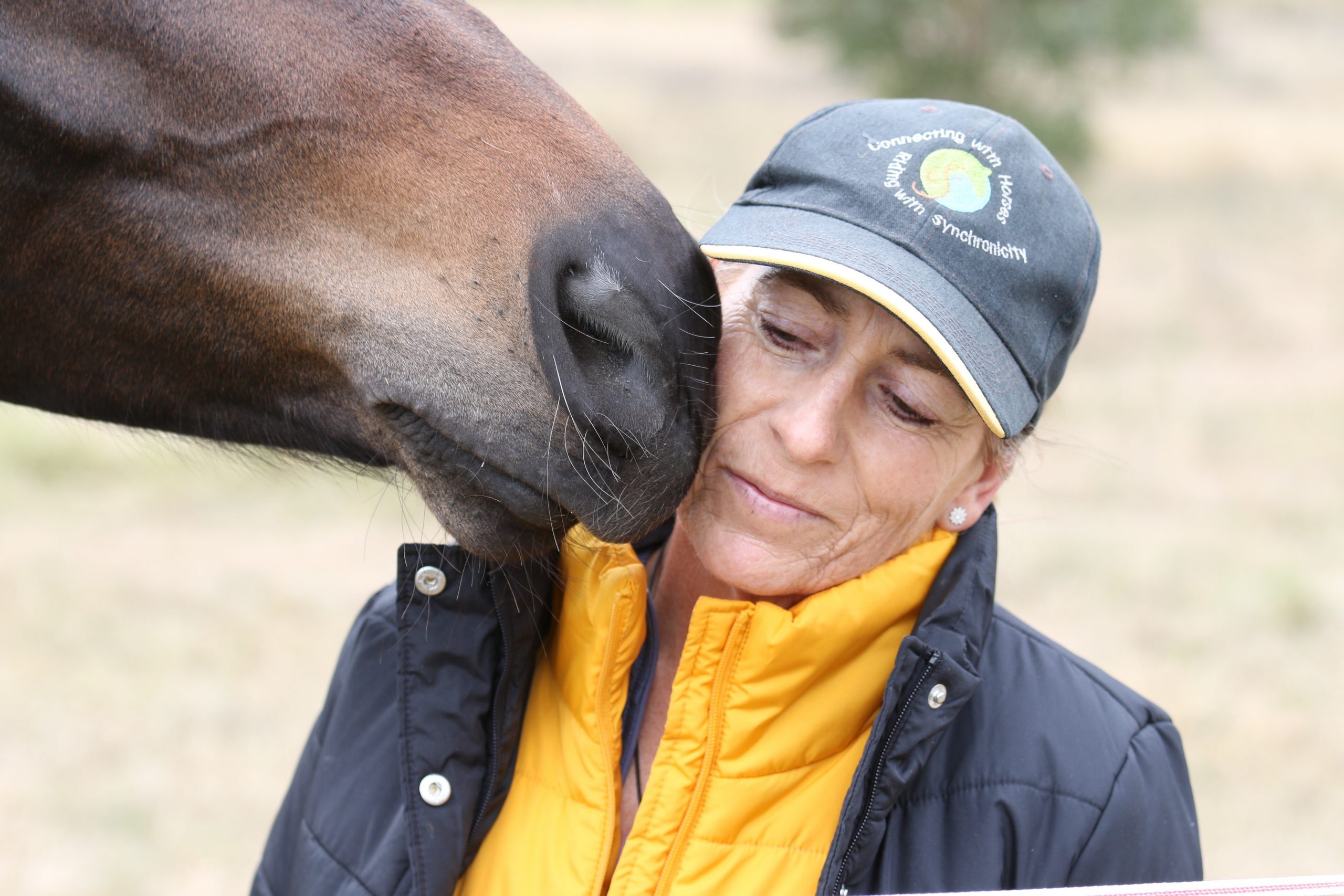
Come along with or without your horse.
Of course if you can bring your horse along your learning will be maximized as nothing beats hands on experience and having direct feedback from a supportive instructor to accelerate your learning. However the other option for attending these courses is to come and participate without a horse, in which case you would actively participate in all of the theory sessions, Q & A sessions, most simulations as well as watch the demonstrations and observe those with horses practice the techniques. People coming without their horses are not just fence sitters. All of these “non-hands on” with horses sessions actually make up a big percentage of this course so the fee is priced appropriately.
Investment The cost to come with your horse is $595 for 3 days EB (Early Bird) Price if FULL payment is made before March 10th. After that the price is $695. A 50% deposit will secure your spot and balance of payment is required 1 week prior to the course start date. Horse spots are limited to 8. Book early so you don’t miss out.
The cost to come and participate without your horse is $75/day for day 1 and day 2 and $55/day for day 3. Total of $205 for 3 days – EB price If paid before March 10th. After that price is $85/day for day 1 and day 2 and $65 for day 3.
Day 1 & 2 have a lot of non-horse activities that you will be fully participating in, equal to those with horses. You are not just fence sitting. Day 3 has more hands on horse horse time – so you will be doing more watching than participating that day.
PLEASE NOTE: No stallions without prior permission. For questions regarding the course content, horsemanship or eligibility for the course contact Mel 0428 385 745 mel@melfleming.com
Please scroll down for booking forms.
COURSE 2 – MARCH 25-27 – LIBERATING with LIBERTY (New course)
Prerequisites for this course...
Developing skills to work with horses on the ground at LIBERTY, that is with no ropes attached, is a great thing to do. When we are catching a horse, before we get the halter on we are at liberty, some people might exercise their horses at liberty, others play with their horse at liberty just for fun, and others do tricks or exhibitions at liberty. For me what is important about liberty is that it truly gives horses choice. That means that the horses are not pressured when they leave or coerced into staying because of the consequences that occur if they do leave. This also extends to no “pressure” when they don’t look at you or don’t “face up” as it is often termed, when teaching horse to be caught.
A lot of liberty that I see demonstrated or taught does not fit my criteria for liberty. Much liberty is trained with a lot of pressure, coercion and consequences for the horse. When we look at the horse’s body or look into their eye, if we see tension or a resigned, shutdown or otherwise unhappy look on their face that will indicate a horse that is not a joyful and willing participant.
So, if we are not going to use pressure or coercion how will we inspire the horse to be with us ?
Why would they want to be with us ?
Some ways to inspire horses to want to interact with us at liberty are:-
Make it a Mental game
Create Curiosity
Use our Energy in a way in which we become like a magnet that draws them to us.
Cause them to Feel Good
Use Food – Yes food is a great motivator and also a great social connector. In humans, we often meet together to have a meal, go out to lunch, have coffee, have a cup of tea, go out to dinner.
There has to be something in it for them – either Intrinsic motivation (feeling good on the inside. eg. safe, relaxed, stimulating) or Extrinsic motivation (coming from the outside, eg. in humans a pay cheque, for the horse food or something else they like) or a combination of both these motivations. Connection with us, stimulation – mental, emotional or physical stimulation, and play (also a form of stimulation) are all Intrinsic motivators. Food is an extrinsic motivator but it too also leads to intrinsic motivation by various means.
This course will teach about both intrinsic and extrinsic motivations.
Giving horses CHOICE is also a big motivator just in itself.
Choice is a powerful motivator and reinforcer.
The more we employ the horse’s “seeking system”, that is, having them seeking (wanting to move towards) something positive as opposed to them moving away from something they don’t like – discomfort or any aversive, the more relaxed, calm, happy and willing a horse will be. The “seeking system” stimulates the parasympathetic nervous system, which brings the horse into relaxation, rest and digest mode and social engagement or “connecting” mode. Its opposite, using discomfort, pressure or aversives, stimulates the sympathetic nervous system which puts the horse in the flight, fight or freeze survival modes which does not lead them to building connection or social engagement and they definitely are not going to be feeling happy, playful or joyful.
So pressuring techniques (even with low grade pressure) don’t result in the most positive outcome or relationship with your horse whatever we are doing, so it is especially not going to inspire your horse to want to be with you at liberty.
WHY MIGHT WE NEED OR WANT TO WORK WITH HORSES AT LIBERTY...be sure to read this as you might be surprised just how important and powerful it can be to include liberty in your training program
- Catching – As already stated when we are catching our horses (before we get the halter on) we are working or interacting with them at liberty. We might have horses that are hard to catch for various reasons in which case we may need some options or more advanced skills for catching.
- Real Choice leads to a great Relationship – Liberty, done in way that truly gives choice is very relationship building. It is very liberating and empowering for the horse to “truly” have choice because mostly horses feel like they have no choice. Much of the time when people think they do give the horse a choice there are negative consequences if the horse doesn’t choose the right answer. This is not real choice. If no is not an option, that is not real choice.Good horsemanship is about getting to the source of why we got a no and resolving that issue and or “Talking them into it, not forcing them into it”.Many horses, once caught, become resigned to the fact that once the halter is on they have to do whatever the human wants, whenever they want. The halter puts most horses into a state of learned helplessness. Their choice or freedom of speech and ability to have an opinion and communicate that opinion is gone or greatly diminished. For many horses this learned helplessness began the first time the little foal had a halter on. For me the real power of liberty is giving horses back freedom and choice. It is not just about being able to do “tricks” with your horse or having an obedient horse.
- Teaching new things – If you teach or introduce your horse to new things at liberty you will clearly know if you are over-facing them or going over their threshold because they will leave. When we go over threshold we induce stress, if they can leave in this moment the stress is reduced. When haltered and the horse feels they can’t get away, the stress is internalized and we have built an association with us and “that thing” to stress. This is relationship destroying. It is not always safe or possible to introduce new things at liberty but it is good when we can. When we can’t, we need to be extra vigilant about observing the horse to notice if we are going over threshold.
- Expression, Playfulness, Spectacular Movement – Horses will often be more expressive, playful and exuberant at Liberty because they feel free to express themselves both positively and negatively. Expressing themselves more positively leads into playful exuberance and better movement. When a horse’s true “play drive” comes up (meaning there is no tension, fear or stress mixed in there as well) they will move in the most engaged, collected way that they are physically capable of. In fact, quite often, because of the biochemistry related to excitement and joy, they will over-ride their physical limitations and move above and beyond what they are physically developed muscularly to do, so their body gets an experience of what a really powerfully engaged body moving with optimal biomechanics feels like.When horses truly play, remembering that true play means the absence of fear or stress, that is when in nature we see them the most correctly engaged. In pure play they use their body in the same way they need to when they carry a rider or do high level dressage movements. A lot of the time people don’t see horses in pure play. Much of the time when horses play they are also tense, because they got spooked first and that initiated the play or their default way of being is so strongly grounded in stress or tension. In these cases they are half playing and half worried and we don’t see optimal biomechanics for engagement and collection – their back is often hollow, the tail and the head are set high and the pelvis and hindlegs disengaged.The movements of high level dressage eg collected gaits and passage and piaffe, are movements that horses naturally do when they play. So to my way of thinking, having the horses perform to their highest potential in these movements requires that they feel playful, not resigned, robotic or just going through the motions to avoid aversives. Liberty is one of the ways horses can first experience “true play” with a human. This makes it a very valuable training tool when it is done without pressure.
- Just for Fun – Liberty is often a good thing to do just because it is fun. We can really experience the feeling of the “Boy and the Black stallion” playing on the beach at liberty.
- Skill Development – Liberty is a great way to develop or check your connection and communication (body language and energy) skills. We need to be more precise and clear with the safety net of the lead rope gone.
- Variety – It is something different and another way to exercise you horse
- Tricks or exhibition or demonstration – You could use liberty for this and there is nothing wrong with that if it is done in a positive way for the horse, but hopefully you have realised that liberty is not just a trick or about teaching your horse tricks. The measure of a horseman or horsewoman is not about their ability to have an obedient horse that is too scared to leave and does a bunch of tricks, but rather the quality of connection, communication, communion, softness, joy and pleasure that the horse and human experience together in either just being or in doing something together.
So if you are ready to liberate your horse and yourself with liberty this course will get you started or help you advance and get more joyful enthusiasm from your horse.
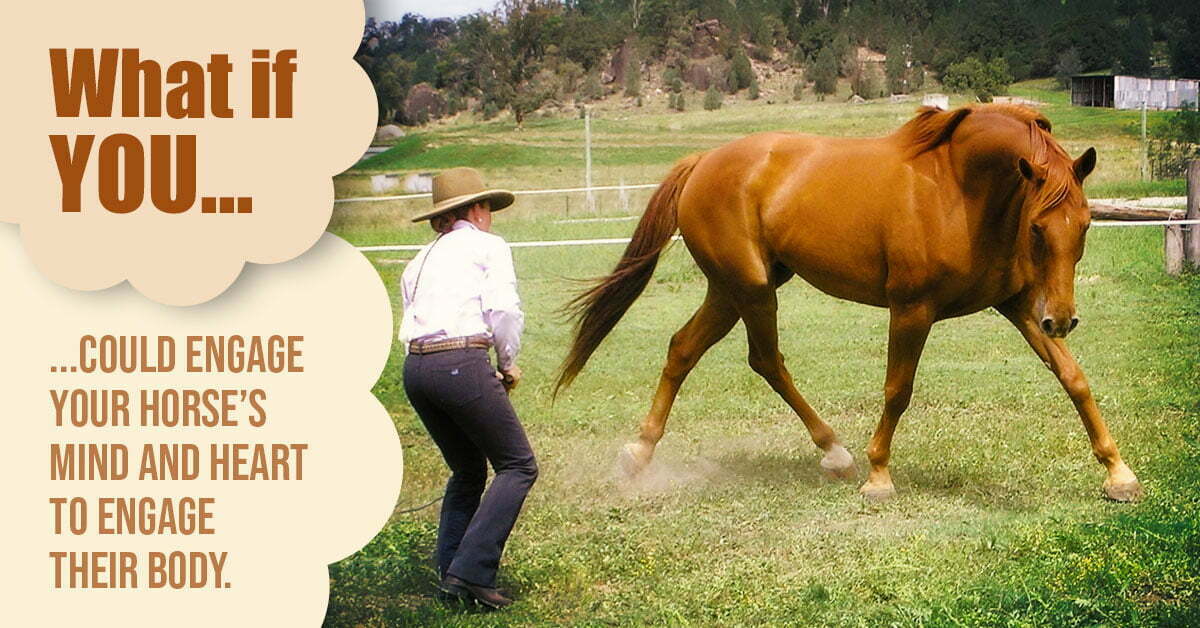
Come along with or without your horse.
Of course if you can bring your horse along your learning will be maximized as nothing beats hands on experience and having direct feedback from a supportive instructor to accelerate your learning. However the other option for attending these courses is to come and participate without a horse, in which case you would actively participate in all of the theory sessions, Q & A sessions, most simulations as well as watch the demonstrations and observe those with horses practice the techniques. People coming without their horses are not just fence sitters. All of these “non-hands on” with horses sessions actually make up a big percentage of this course so the fee is priced appropriately.
Investment The cost to come with your horse is $595 for 3 days EB (Early Bird) Price if FULL payment is made before March 10th. After that the price is $695. A 50% deposit will secure your spot and balance of payment is required 1 week prior to the course start date. Horse spots are limited to 8. Book early so you don’t miss out.
The cost to come and participate without your horse is $75/day for day 1 and day 2 and $55/day for day 3. Total of $205 for 3 days – EB price If paid before March 10th. After that price is $85/day for day 1 and day 2 and $65 for day 3.
Day 1 & 2 have a lot of non-horse activities that you will be fully participating in, equal to those with horses. You are not just fence sitting. Day 3 has more hands on horse horse time – so you will be doing more watching than participating that day.
PLEASE NOTE: No stallions without prior permission. For questions regarding the course content, horsemanship or eligibility for the course contact Mel 0428 385 745 mel@melfleming.com
Please scroll down for booking forms.
COURSE 3 – MARCH 28-30
INTRODUCTION TO RIDING WITH SYNCHRONICITY
Prerequisites for this course...
‘Riding with Synchronicity’ means to ride in perfect synchronicity and harmony, becoming like a centaur where you become part of the horse and the horse becomes part of you. To achieve this we need to understand the horse’s physical body and the biomechanics of how their body works. It is vitally important for horses to be ridden in correct posture and biomechanical balance if they are to enjoy the experience, stay sound, be healthy and reach their highest athletic potential.
This course teaches the fundamental principles and “how to” of learning to ride with harmony, effortless and ease. Learn the secrets to happy and successful riding partnerships with horses. Whether you just want to ride for pleasure or have high aspirations for competition these secrets will be invaluable. These fundamental keys will be imperative to develop yourself to be a great rider. One that allows the horse to move as nature intended and to be the best athlete that they can be – maximising performance in any field and keeping them happy and healthy. I believe this teaching will be of great benefit whether you are relatively new to riding or had many years in the saddle. Even high level competition riders and folks who have “lived” in the saddle, have greatly appreciated and benefited from this teaching.
Learn more about the course content...
There are some common principles that are found at the highest levels in all great sports people – athletes, martial artists or dancers – these principles also apply to horsemanship and riding. I have learned these principles through feldenkrais and martial arts, as well as what I have learned with horses. These principles lead us to riding in complete balance and harmony with the horse and without any brace or resistance to the horse. They include being centered, aligned and using our body in a fluid and unified way – this occurs when we are relaxing completely – the opposite of being in a state of contraction or tension.
We are sitting on a horse’s “moving” back. Their back moves in combinations of 6 directions. This correct and uninhibited movement in a horse’s back is critical for the horse to move with good biomechanics. Our responsibility as a rider is to stay out of the way of this natural movement and not impede it. We have to sit and move in a way that doesn’t block the movement but instead synchronizes exactly with it, rather than brace, hold or lock up against it. We have to follow and sometimes lead the horse into this movement if they have lost their naturally correct movement.
A lot of horses have lost their naturally correct movement because of badly fitting saddles and riders that impeded the small but critical movements in a horses back. If the horse’s movement has been corrupted, which is very common, we need to help them recover their natural movement patterns again. We need to lead them into it. The more we understand the directions of movement the more we can train our body, especially the torso, to go with the horse. It is a lot of very small subtle movements in our spine and torso, which then flow on into the arms and the legs. The movements I am talking about are so small that when we are on the horse it should look like we are not really moving. They are more like internal micro movements but they make all the difference. These movements lead horses into roundness, balance and hindquarter engagement without us forcing them into a frame or a posture. These same internal micro movement patterns are what will also keep us sound, healthy and happy in our own bodies when we are walking, riding or doing our everyday activities and sports.
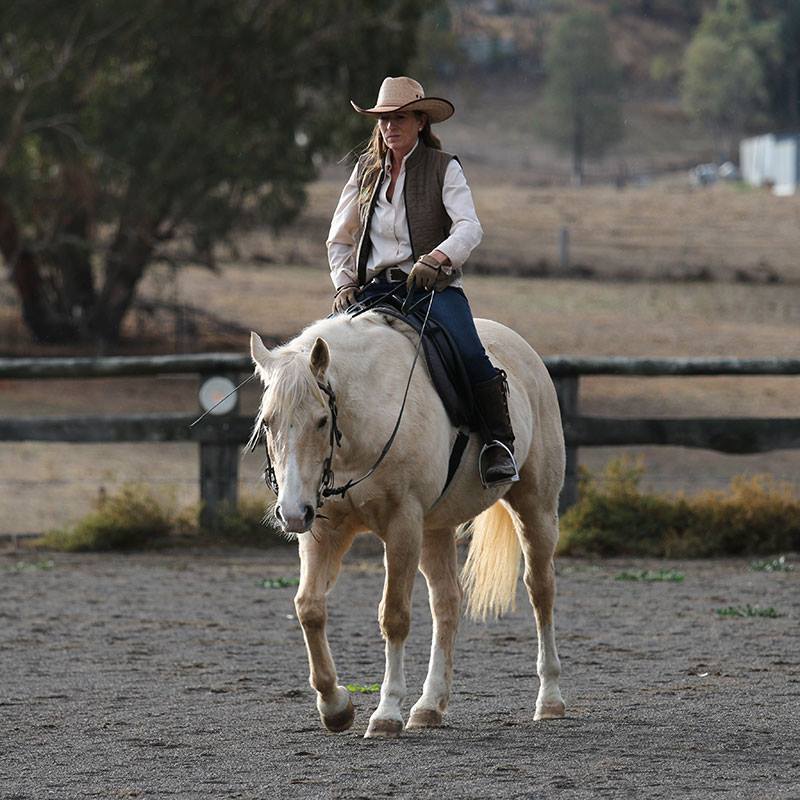
Come along with or without your horse.
Of course if you can bring your horse along your learning will be maximized as nothing beats hands on experience and having direct feedback from a supportive instructor to accelerate your learning. However the other option for attending these courses is to come and participate without a horse, in which case you would actively participate in all of the theory sessions, Q & A sessions, most simulations as well as watch the demonstrations and observe those with horses practice the techniques. People coming without their horses are not just fence sitters. All of these “non-hands on” with horses sessions actually make up a big percentage of this course so the fee is priced appropriately.
Investment The cost to come with your horse is $595 for 3 days EB (early bird) Price – if full payment is made before March 10th. After that the price is $695. A 50% deposit will secure your spot and balance of payment is required 1 weeks prior to the course start date. Horse spots are limited to 8. Book early so you don’t miss out.
The cost to come without your horse is $75/day. Total of $225 for 3 days – EB price – if full payment is made before March 10th. After that price is $85/day.
PLEASE NOTE: No stallions without prior permission. Ideally bring the horse that you had in the preliminary courses so you are ready to progress. For questions regarding the course content, horsemanship or eligibility for the course contact Mel 0428 385 745 mel@melfleming.com
Please scroll down for booking forms.
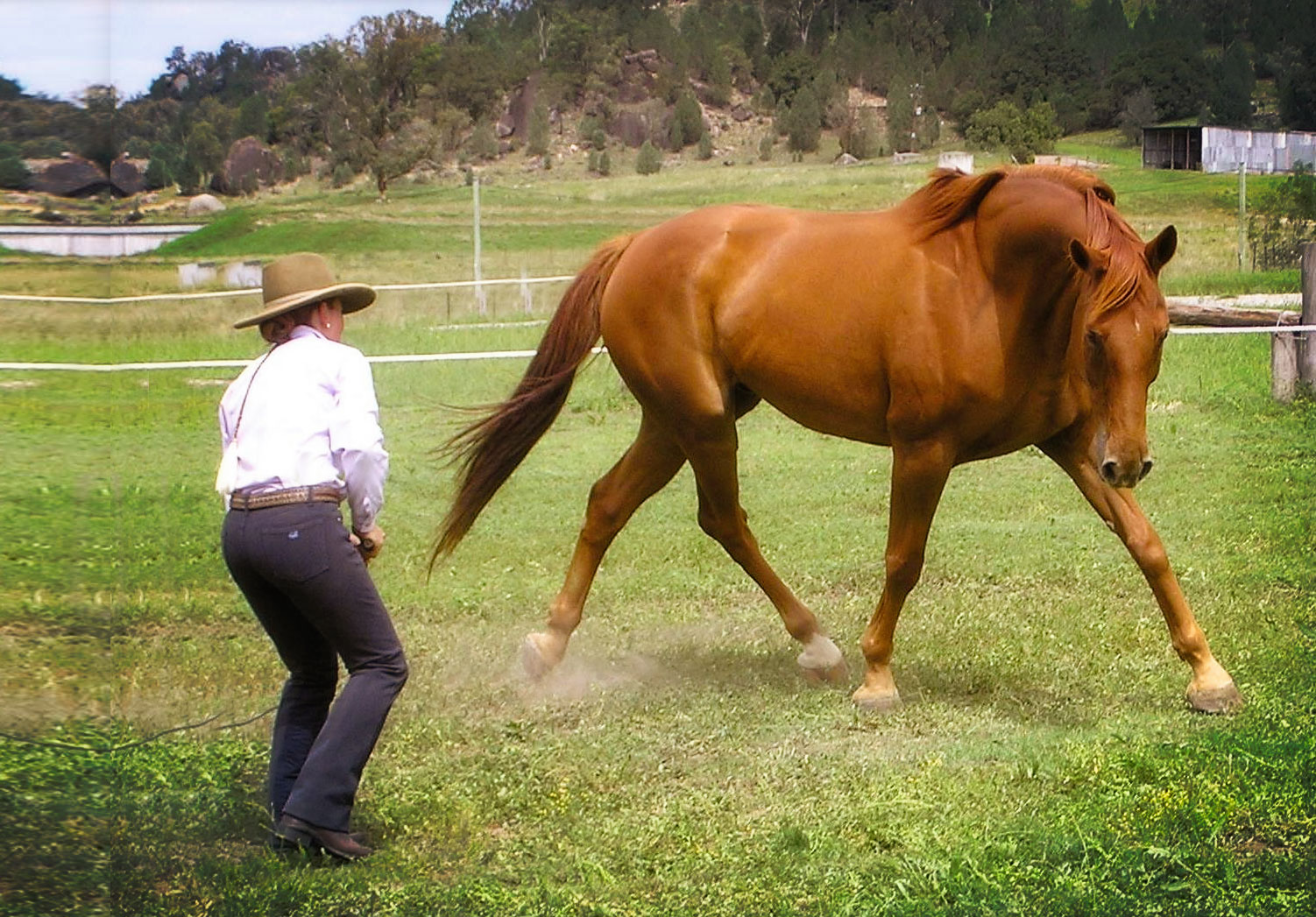

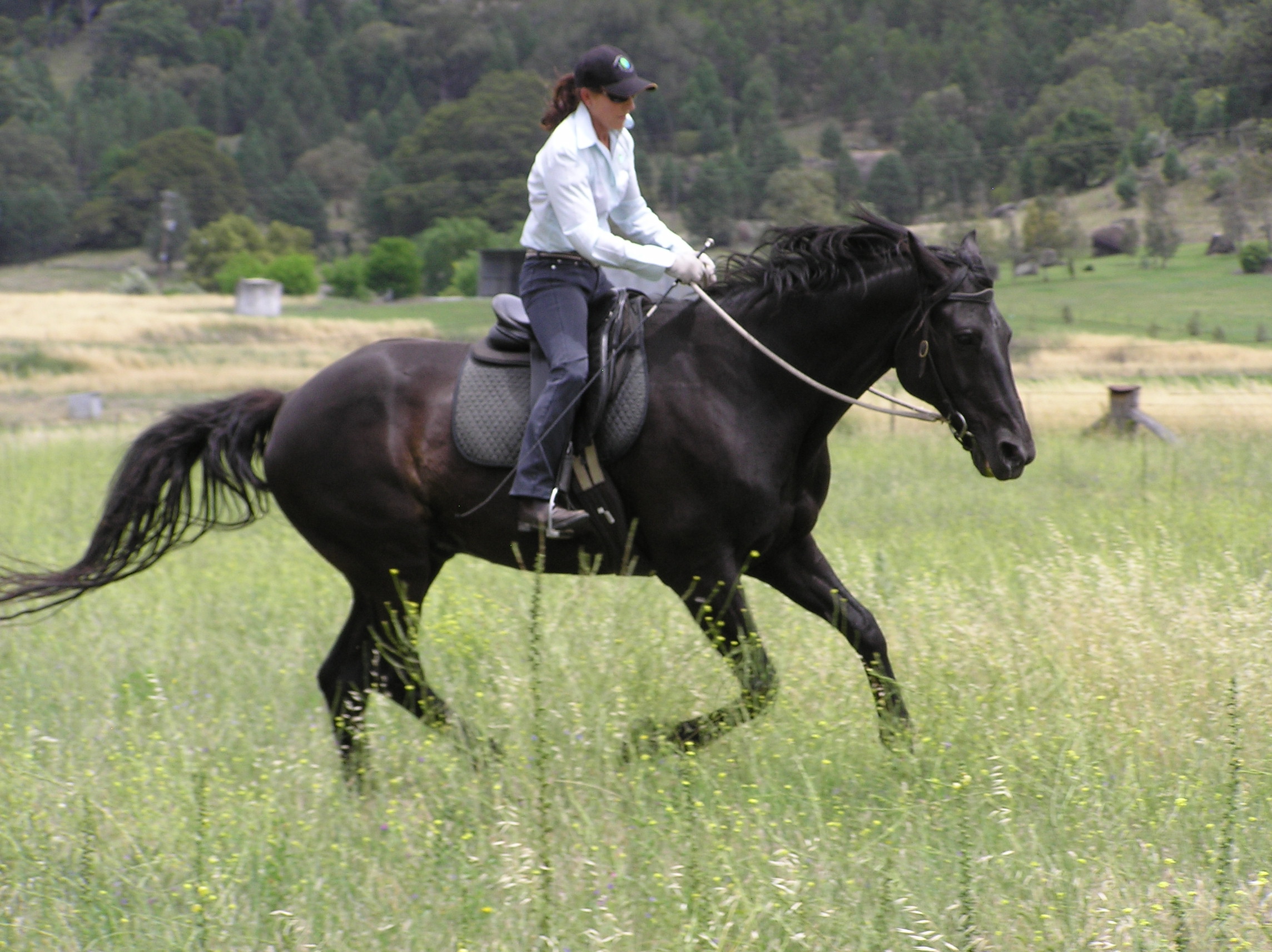
‘Functional Saddling’ consultations, BALANCE saddles, Private lessons & Bodywork sessions –
These sessions are available the day before or after the course or in the mornings or evenings of the course.
Find out more details about these sessions
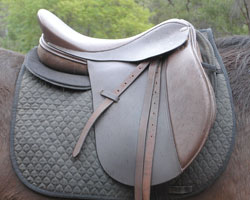

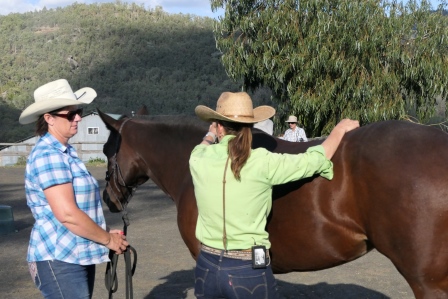
All these 3 course are designed to flow on one into the next – so you can combine them to do a 6 or 9 day course. We also have an Intermediate course coming up in April 20-24. Details will be available soon. If you are new to my teaching and interested in doing all 3 courses get in touch and we can have a chat – just to make sure that all the courses are appropriate for you and your horse. Most people could do all 3 courses in a row but I don’t want anyone to feel overwhelmed if you and your horse are not ready to progress through these subjects so rapidly.
